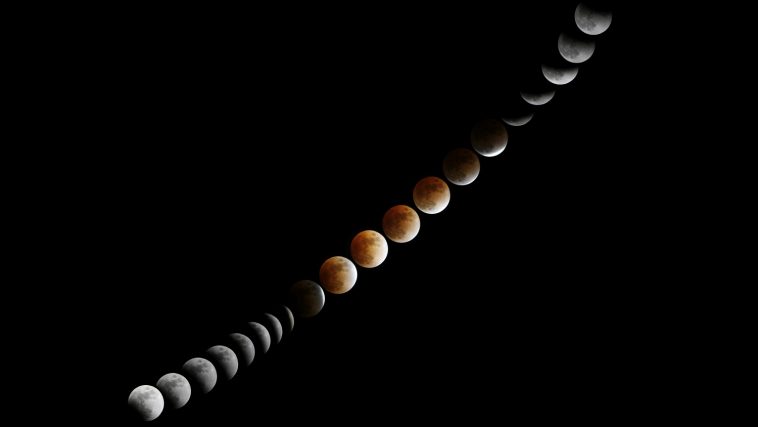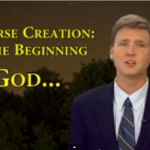Lunar Eclipses
When the sun and moon are in opposite orientations, earth’s shadow dashes across the lunar surface, blocking the sun’s light and darkening the moon in a lunar eclipse. From earth, we view the curved edge of earth’s shadow biting into the face of the full moon and slowly swallowing its way into the lunar disk.
Typically, the alignment of the earth, moon, and sun is imperfect, so the shadow never encompasses the moon. Infrequently, however, the entire lunar surface is cloaked in darkness. Total lunar eclipses persist only as long as is necessary for the moon to cross through earth’s shadow. During a total eclipse, the moon often obtains a ghostly, deep red blush—the consequence of a small quantity of sunlight reddened by earth’s atmosphere and bent onto the lunar landscape.
Solar Eclipses
When the moon and sun are on the same bearing, an even more breathtaking event occurs: The moon passes in front of the sun, fleetingly turning day into night, producing a solar eclipse.
In a total solar eclipse, when the earth-moon-sun alignment is perfect, some planets and numerous stars become visible in the daytime as the sun’s light is diminished nearly to nothingness. We can also glimpse the sun’s eerie outer atmosphere, the corona, at this time.
During a partial solar eclipse, the moon’s path is somewhat “off center,” and only a fraction of the sun’s face is concealed, resulting in a halo around the darkened solar orb.
In either instance, the vision of the sun seemingly being swallowed up by the moon’s black disk is unnerving even today. It certainly must have inspired terror in the hearts of early witnesses. Small wonder that the talent to forecast such episodes was a highly prized skill in ancient societies.
Why Don’t Eclipses Happen Constantly?
Why doesn’t the moon pass unerringly between earth and the sun once per revolution and faithfully through earth’s shadow fourteen days later? The answer to this question can be found in the moon’s orbit.
The moon’s course is marginally inclined at an angle of 5.2°, so the odds that a new (or full) moon will transpire just as the moon happens to traverse the orbital plane (with earth, moon, and sun aligned) is fairly low. If the moon happens to sit above or below the orbital plane when the moon is new or full, an eclipse cannot ensue. Such a configuration is termed “inauspicious” for generating an eclipse.
In a favorable alignment, the moon is new or full just as it intersects the orbital plane, and an eclipse can be observed.
Precise Arrangements
Science can provide us with numerical values, like:
- 365.356 days for the earth to make one revolution around our sun,
- 29.530588 days for the monthly lunar cycle to complete,
- and 6585.3213 days for the eclipse cycle to conclude
to explain the earth, moon, and sun celestial voyages.
However, the numbers here are extremely precise figures when we consider they relate to the motion of a planet, a satellite, and a star in sequential orbit through space. Certainly, the earth-moon-sun relationship was not thrown together by unintentional methods. The exactness with which the solar system is designed is far greater than anything man has ever manufactured or that can be accounted for by any accidental process.
Even the size and position of the earth’s moon support biblical truths. Genesis records that God made two great lights, one with the purpose of ruling over the day, and one with the objective of ruling over the night.
The apparent size of these bodies from earth is plainly an important factor in their rulership. They appear to be the same size in the sky even though the sun is almost 400 times larger than the moon. This is because the moon is almost 400 times closer to us than the sun.
This meticulous relationship means that the earth may be the only place in the universe where one can see a total eclipse of a star like our sun. Unquestionably, such a detail-orientated, one-of-kind relationship in all the universe is a testament to an omniscient and omnificent Designer’s hand and not some random catastrophic act, such as a “Big Bang.”






